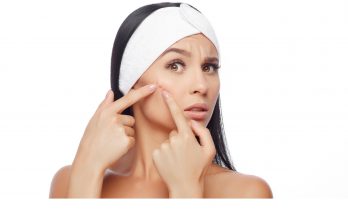I have long been skeptical but curious about the ability of shampoo bars to effectively wash and detangle my hair, but after hearing more and more about them and feeling like I should also do my part to reduce my plastic usage with shower products, I decided to switch for a week and see if a shampoo bar would actually live up to the hype. Here’s my experience and why I don’t plan on switching back.
A note on hair type: Like any hair product, a shampoo bar affects different hair types differently. For reference, my hair is fairly long and very fine, but I have a lot of hair, so the result is thick, with lots of volume and plenty of knots and tangles. I also have hair that, left to dry on its own, is moderately curly and wavy.
Choosing a Shampoo Bar
For this experiment, I actually choose the shampoo bar of the exact liquid shampoo I had been using, so that I could more fully compare the differences between them. The one I picked is this Coconut Water and Mimosa Flower Shampoo Bar (which is at Target for about $5). However, possibly the best place to get high-end shampoo bars is LUSH. To choose your bar, consider the goals you have for your hair and your hair type. Some are intended for more volume, while others are extra-silky or restorative. Those with short hair can probably ditch their liquid conditioner as well, if they choose one that’s a combined shampoo and conditioner.
My Review
I’ve loved using this bar shampoo for the past week. While I was worried it wouldn’t work well enough for my long, prone-to-knotting hair, I was surprised by the results. It takes a bit longer to use, but as long as I wet my hair first and apply it directly, it covers everything and works well. The bar I use is a combined shampoo and conditioner, and while it isn’t strong enough to replace my liquid conditioner, it does smooth my hair more than liquid shampoo does and I’ve been using less conditioner as a result. As the ultimate test, I also tried this after going to the pool (I swim several times a week) and it even did a pretty good job at cleaning out the chlorine.
Tips for Best Use
- Wetting my hair and rubbing the bar directly on it was a much easier way to get enough shampoo off the bar to coat all of my hair and clean it top to bottom.
- Find a dry spot in the shower to store it, or the shampoo will get wet, leak off, and not last as long.
- If you have long, curly, or easily tangled hair, you’ll likely still need to use a conditioner (bar or liquid) alongside the shampoo.
How They Work on Other Hair Types
To give a better sampling of how shampoo bars work on other hair types, I asked a few women with varying hair types and hair goals to give their thoughts on how the bars work for them.
Clarize has long, thick hair with some frizz and waviness. She says, “I’ve been trying to find the perfect shampoo bar for my needs. The base can get kind of oily but the one I have seems to control the oil without drying up too much.”
Lana has normal to somewhat dry hair. She makes and uses her own shampoo bar, which she says has worked perfectly for her thus far. Travel blogger Marinella has straight to wavy hair. She says, “It cleans my hair for sure! I don’t even use a conditioner bar. The shampoo one is enough. I mainly switched for travel purposes. No liquids for the plane!”




People have no idea that fast growth shampoos (of course with no sulfates, no parabens or DEA) are a thing. People now may enjoy longer hair and attain more alternatives. Surely worth looking up.
If you’re talking about hair loss, damaged hair, preventing hair disorders, hair growth, hair health normally, similar ideas become relevant.
As a rule of thumb, you want to steer clear of hair treatments and products that include chemicals such as parabens, DEA and sulfates.
What is good for your hair is healthy for your skin also.
It goes without saying your content here is so accurate for many reasons. It avoids the common pitfalls and errors so many fall into- utilizing horrible alternatives. Greatly appreciated!